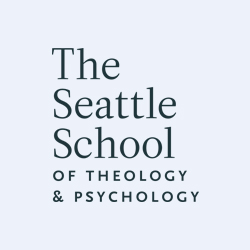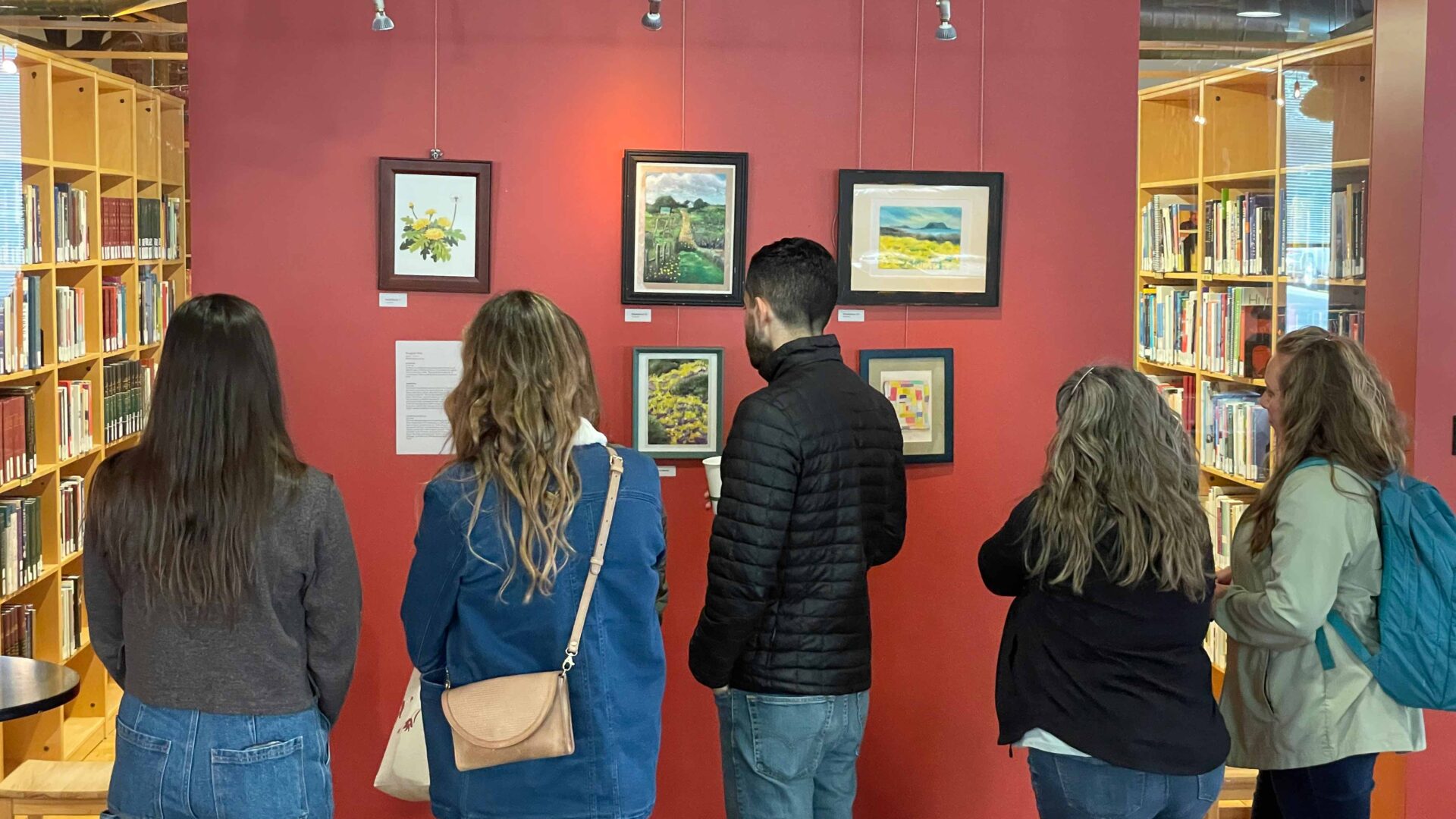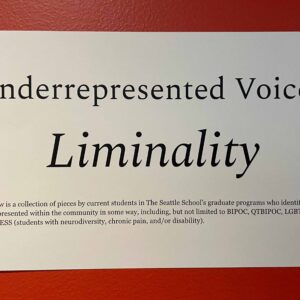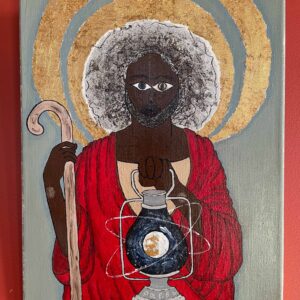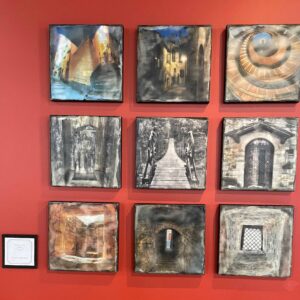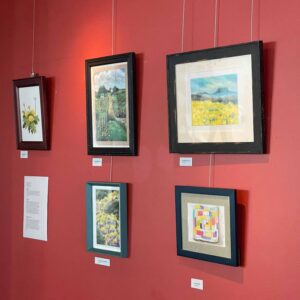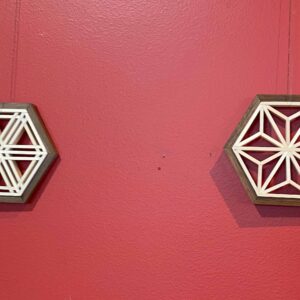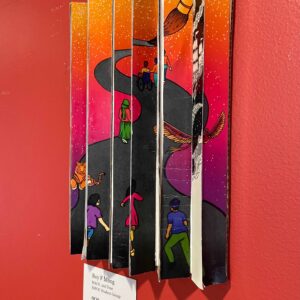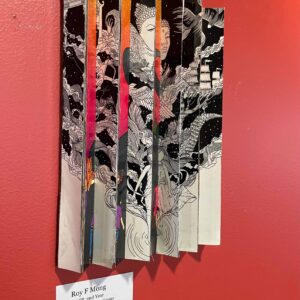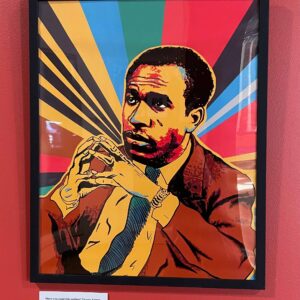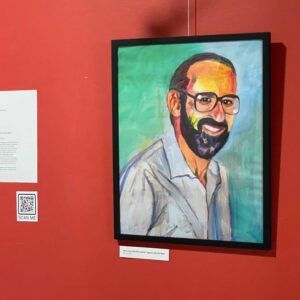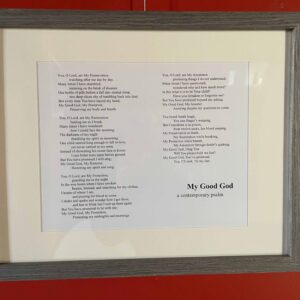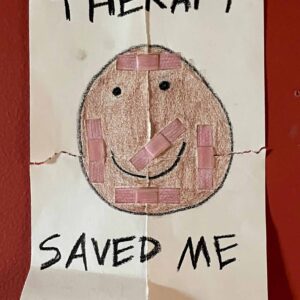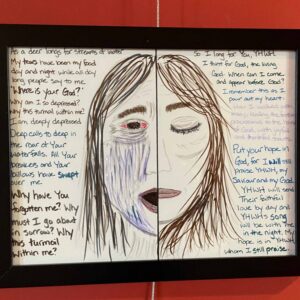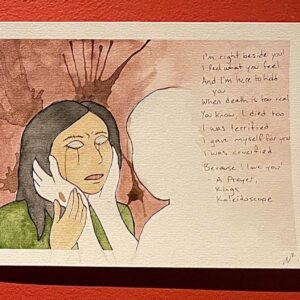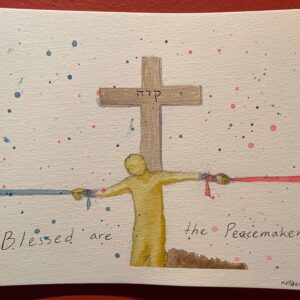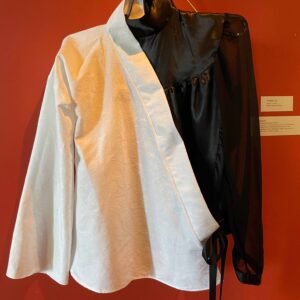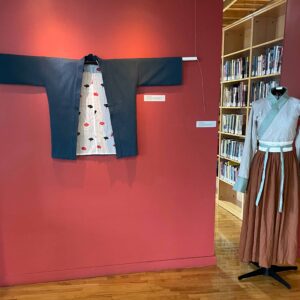- Underrepresented Voices Liminality Show: Introduction
- Rabbi
- Thresholds
- Jo-Kak-Bo
- Kumiko
- Of Harmony and Fret
- Of Harmony and Fret
- Frantz Fanon
- Ignacio Martin Bano
- My Good God, a contemporary psalm
- Therapy Saved Me
- A Psalm 42 Self Portrait
- speaking of loss
- a political party/ hope means tension
- Funeral Garb
- Fast Fashion Rebellion (left) Learning Hanfu (right)
 In spring 2024, the BIPOC, Access (students with neurodiversity, chronic pain, and/or disability), LGBTQIA+, and QT BIPOC student groups collaborated to create an on-campus art show with the theme of “Liminality.” Seattle School students and alumni who identify as underrepresented within the context of The Seattle School and/or within their profession had the opportunity to share their artistic and creative work together. The concept of the Underrepresented Voices art gallery began in 2023 when student groups co-sponsored the inaugural show.
In spring 2024, the BIPOC, Access (students with neurodiversity, chronic pain, and/or disability), LGBTQIA+, and QT BIPOC student groups collaborated to create an on-campus art show with the theme of “Liminality.” Seattle School students and alumni who identify as underrepresented within the context of The Seattle School and/or within their profession had the opportunity to share their artistic and creative work together. The concept of the Underrepresented Voices art gallery began in 2023 when student groups co-sponsored the inaugural show.
Organizers described this year’s theme: “‘Liminality’ could be as broad as anything you, as an underrepresented student, would like to express about yourself. Or, it could be as specific as invisibility, minoritized experiences, subjugated knowledge, or beauty in the margins, the sacred mystery in your culture or identity, etc.” In addition to representing the BIPOC, LGBTQIA+, QT BIPOC, and Access student groups, the students who participated were also representative of the three degree programs: Master of Arts in Counseling Psychology (MACP), Master of Arts in Theology & Culture (MATC), and Master of Divinity (MDiv).
As artist Roy Mong commented, the diversity expressed within the “Liminality” show extended to the wide variety of media and art forms represented as well. Artists displayed works with acrylic paint, oil paint, oil pastels, gold leaf, watercolors, cardboard, wood, and various fabrics. Some of the pieces in the show had been created as final projects for the Winter 2024 course titled “Narrative, Identity & Asian American Experiences,” taught by Dr. Jermaine Ma.
The “Liminality” show launched during spring residency, and the artists had the opportunity on Friday afternoon to share their experiences and insights with their classmates, both related to making the pieces as well as sharing them publicly. Students discussed themes such as courage and vulnerability. Artists shared their anxieties about visible imperfections, and wrestling with the felt need to justify or explain their work. They also described how they challenged themselves and learned through the creative process from exploring cultural identities to understanding and practicing new techniques. For example, Sunghee Kim used watercolor painting to display Jo-kak-bo, a traditional Korean patchwork technique, and Ryan Ho shaped bass and walnut wood into Kumiko patterns, a Japanese art style from the 7th century. Roy Mong described how the use of different colors helped him to integrate and appreciate different aspects of himself and his experiences.
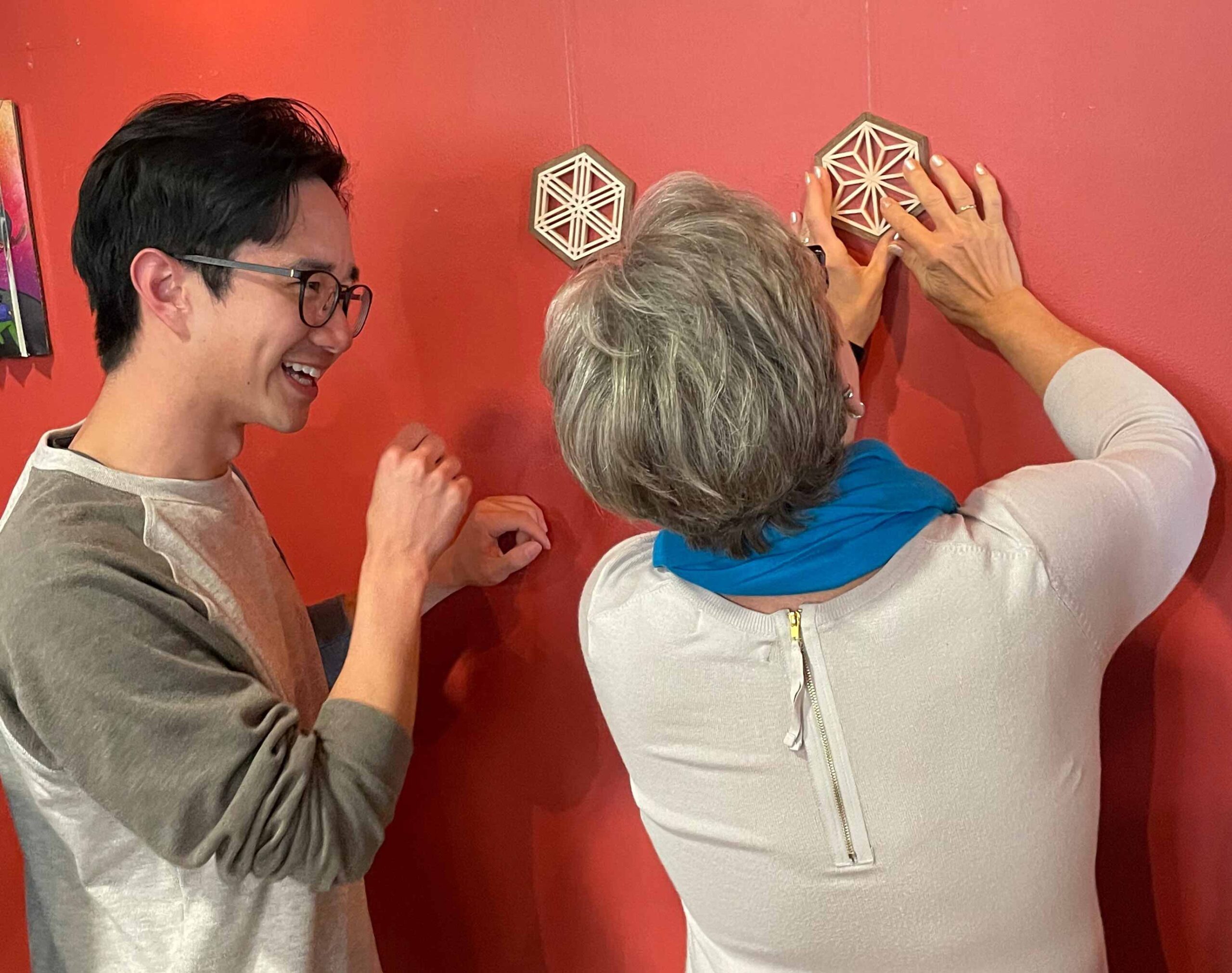 Inspiration was another theme. The 2023 gallery had encouraged this year’s artists: in seeing the work of others they were inspired to share their work as well, to continue inspiration and conversation for future generations of students. The 2024 show also continued the themes of collaboration and engagement: two artists invited interaction and responses through a QR code while other artists invited sensory engagement through touch. Students at the reception expressed their gratitude and wonder to the artists for the depth of expansion and interconnection with the works.
Inspiration was another theme. The 2023 gallery had encouraged this year’s artists: in seeing the work of others they were inspired to share their work as well, to continue inspiration and conversation for future generations of students. The 2024 show also continued the themes of collaboration and engagement: two artists invited interaction and responses through a QR code while other artists invited sensory engagement through touch. Students at the reception expressed their gratitude and wonder to the artists for the depth of expansion and interconnection with the works.
Another theme that emerged was how uniqueness and individuality were expressed within the diversity of the art and media on display in the gallery. “By being significantly and uniquely you, you can encourage and uplift others. You are helping further the conversation,” said Roy Mong. As in 2023, belonging emerged as a theme as well. Natalie Ng described feeling “Not Chinese enough. Not white enough…With liminality, I’ve learned to somehow embrace it and be ok in the uncomfortable spots.” Describing liminality, Mong shared, “The edge is where you live.” “Making the unseen seen is the whole point of the gallery,” said Ng.

